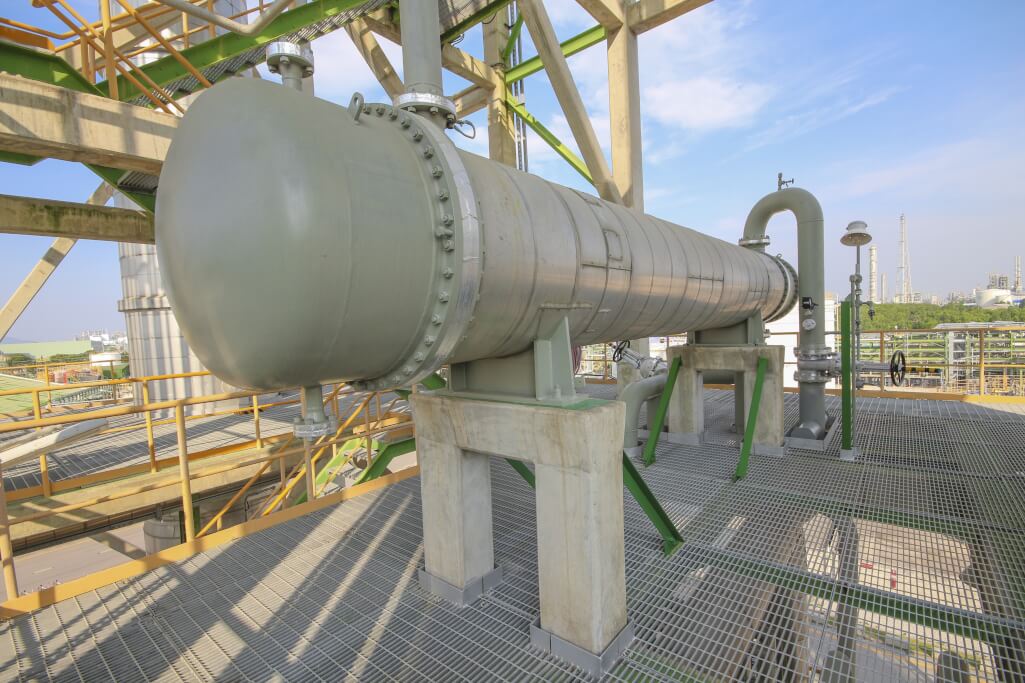Sour Water Stripping (SWS) units are critical in refinery wastewater treatment, removing ammonia (NH3) and hydrogen sulfide (H2S) before the water is reused or discharged. However, maintaining optimal performance between shutdowns is a challenge, particularly due to fouling, corrosion, and hydrocarbon contamination.
By Jaya Kulshreshth, Heat Exchanger Design Specialist
One of the most overlooked yet crucial components in SWS units is the heat exchanger network. Proper design modifications, operational improvements, and cleaning strategies can significantly enhance the efficiency and longevity of these exchangers. In this article we will be looking at the most common heat exchanger challenges in SWS units.
Fouling in feed/effluent exchangers
Fouling in feed/effluent heat exchangers reduces heat transfer efficiency, increasing steam demand and leading to off-spec treated water. The most common types of fouling include:
- Hydrocarbon fouling – Naphtha and heavy hydrocarbons agglomerate with particulates, forming sticky sludge that accumulates in exchangers.
- Particulate fouling – Coke fines, corrosion by-products, and catalyst fines create deposits that reduce flow and heat transfer.
- Salt precipitation – Calcium and magnesium compounds form scales on heat exchanger surfaces.
Solutions & modifications:
- Install bypasses around exchangers to enable on-stream cleaning without requiring a full unit shutdown.
- Enhance upstream separation by installing coalescer filters or feed stabilization tanks to reduce hydrocarbons and particulates entering the heat exchangers.
- Periodic chemical washing using weak acids/bases or vapor-phase hydrocarbon washes can break down fouling deposits without dismantling equipment.
Corrosion risks and mitigation in heat exchangers
Corrosion is a major concern in SWS heat exchangers, particularly in overhead condensers and reflux exchangers, due to the presence of ammonium bisulfide (NH4HS), hydrogen cyanide (HCN), and free cyanide ions. Key corrosion mechanisms include:
- NH4HS corrosion – Occurs at high velocities and NH4HS concentrations above 35 wt%, affecting carbon and stainless steel.
- Under-deposit corrosion – Caused by scale buildup, leading to localized corrosion underneath deposits.
- Erosion-corrosion – High-velocity droplets or particulates wear down exchanger tubes and fittings.
Engineering solutions:
- Increase pipe diameters and reduce velocities in NH4HS-prone areas to minimize wall shear stress.
- Use corrosion-resistant alloys (Duplex Stainless Steel, Inconel, or Titanium) for high-risk areas, particularly in overhead exchangers.
- Steam tracing and insulation for overhead lines to prevent ammonium carbonate/bicarbonate sublimation, which can cause corrosion in control valves and piping.
- Improve exchanger design by implementing low-shear configurations to reduce erosion risks.

Ensuring stable energy efficiency in heat exchangers
A well-designed heat exchanger system optimizes energy usage and reduces the steam load on the reboiler. Poor energy efficiency can result from:
1. Excessive fouling, reducing heat recovery efficiency.
2. Undersized or poorly designed exchangers causing high-pressure drops.
3. Inadequate heat exchanger cleaning schedules leading to degraded performance.
Optimization strategies:
• Improve exchanger sizing and configuration to ensure proper LMTD (Log Mean Temperature Difference) and minimize fouling risk.
• Adopt high-efficiency plate-and-frame heat exchangers where feasible to improve heat recovery and reduce the steam requirement.
• Implement regular performance monitoring through heat balance calculations and infrared thermography to detect early fouling and efficiency losses.
• Increase reboiler efficiency by maintaining a consistent steam supply and controlling feed temperature through optimized exchanger operation.
Final thoughts: a proactive approach to heat exchanger management
Heat exchangers are the heart of Sour Water Stripping Units, and their performance directly impacts the overall efficiency of the process. Implementing design modifications, corrosion mitigation strategies, and effective fouling control can extend equipment life, reduce operating costs, and improve refinery reliability.
 About the author
About the author
Jaya Kulshreshth is a heat exchanger design expert with over 19 years of experience in the oil and gas industry as a design consultant.
She is currently the Engineering Manager at Ramsis Engineering, Bahrain, with a background at Engineers India Limited (EIL). A chemical engineer with an MBA, she has led engineering, process optimization, and sustainability initiatives. As a senior design professional, Jaya specializes in energy-efficient solutions and provides technical training for global energy firms.
About this Featured Story
Why Subscribe?
Featured Stories are regularly shared with our Heat Exchanger World community. Join us and share your own Featured Story on Heat Exchanger World online and in print.



 About the author
About the author